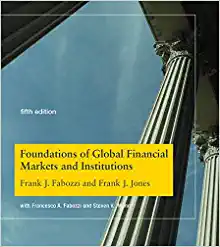Question
. Two fast food restaurants, John's Burgers and Ken's Burgers, are engaged in quantity competition in a small town. Both restaurants can produce either 10,000
. Two fast food restaurants, John's Burgers and Ken's Burgers, are engaged in quantity
competition in a small town. Both restaurants can produce either 10,000 or 15,000
meals. If both restaurants produce 10,000 meals, they will each earn $50,000 in profit.
If they both produce 15,000 meals, they will each earn $40,000 profit. If one produces
10,000 meals and the other produces 15,000, then the restaurant that produces less
will earn a profit of $30,000 and the restaurant that produces more will earn a profit
of $60,000.
(a)Derive the profit/payoff matrix for John's Burgers and Ken's Burgers
(b)Do the restaurants have a dominant strategy? If so, what is it?
(c) Solve for the pure strategy Nash equilibrium. Is this equilibrium optimal for both
restaurants or is there an alternative outcome that they would both prefer?
3. Use the actions and payoffs described in question 2 to answer the following:
(a) Explain how repeated interaction between John's Burgers and Ken's Burgers could
result in a different, and perhaps preferred, equilibrium outcome
(b) Let John's Burgers be the Stackelberg leader and Ken's Burgers be the Stackelberg
follower. Draw the extensive form of this game.
(c)Solve for the sub-game perfect Nash equilibrium of the game described in (b).
Step by Step Solution
There are 3 Steps involved in it
Step: 1

Get Instant Access to Expert-Tailored Solutions
See step-by-step solutions with expert insights and AI powered tools for academic success
Step: 2

Step: 3

Ace Your Homework with AI
Get the answers you need in no time with our AI-driven, step-by-step assistance
Get Started


